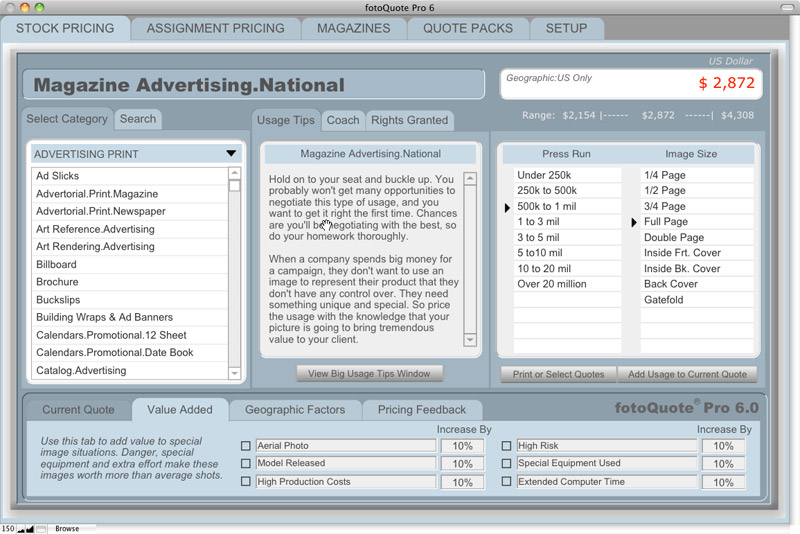The other day I heard from a Colorado photographer who needed stock photo pricing advice. An advertising agency had seen one of her wildlife images and wanted to use it in a campaign for a national brand.
They had apparently indicated to her that they would want a “total buyout” of the image, and so before their negotiation phone call, the photographer wanted to get an idea of what kind of price she should be looking at. In truth, she wasn’t so excited about the buyout idea, because as a biologist, she’d planned to use the image in a future book, and didn’t want to give away all rights.
I suggested that she ask a few questions, get specific ideas about how the client might use the image and get back to me when she had the answers. As I usually do, I also advised her not to take the buyout. Buyouts are a lazy and vague way to negotiate, and more often than not, the term usually accompanies insultingly low price offers.
Long story short, the ad agency began the conversation by offering her $300 for a total buyout of the image. This was all before she even said a word. The photographer kept her composure and politely asked the questions that would help her determine what a reasonable price would be from her standpoint.
As of this point, she has not heard back from the agency, which pretty much says that they were hoping to grab all rights to a really cool image for only $300 from someone who they assumed to be a total novice. And here she was thinking she’s start her negotiations at around $3,000.
Whether you’re a novice photographer, if someone want’s your image, it becomes a commodity that has value, and it should be priced as such. Unfortunately, since there are no established “rules” as to how much money we should get for our images, it’s up to us to negotiate our own prices.
As with any photography sale, here’s the basic information that you need to gain in order to establish a price:
- How and where the image will be used? Advertising, corporate, or editorial use.
- Size of use in the publication?
- Circulation
- Duration of use
Once you have this info, you can plug it into a photography pricing program and come up with a starting point. You don’t have to hold to that price, an often times you’ll come up or down depending on the situation, the client and the image.
Even if you’re not a full time professional photographer, if you intend to sell your photography, I highly recommend getting FotoQuote software. Not only does it have pricing tables for just about every type of use, it’s full of insight and tips about how to negotiate and price your imagery. It even has a magazine database and an entire section on assignment pricing.
Read my series on pricing photography at The Photoletariat.


I once got a call from a woman who said pretty much the same thing, from something found on flickr. This big ad agency wanted a total buyout. I was eventually hired to negotiate the sale for her, and she wound up getting a high 4-figures, but the client took more than two months to let us know it was finally approved from the time we first gaver her a quote. Waiting with expectations can be torture though. Just keep the fingers crossed.
Thanks for the info as always Dan. That’s something I’ve been wondering myself recently and I didn’t know where to start, either with prints or digital downloads.
Cal